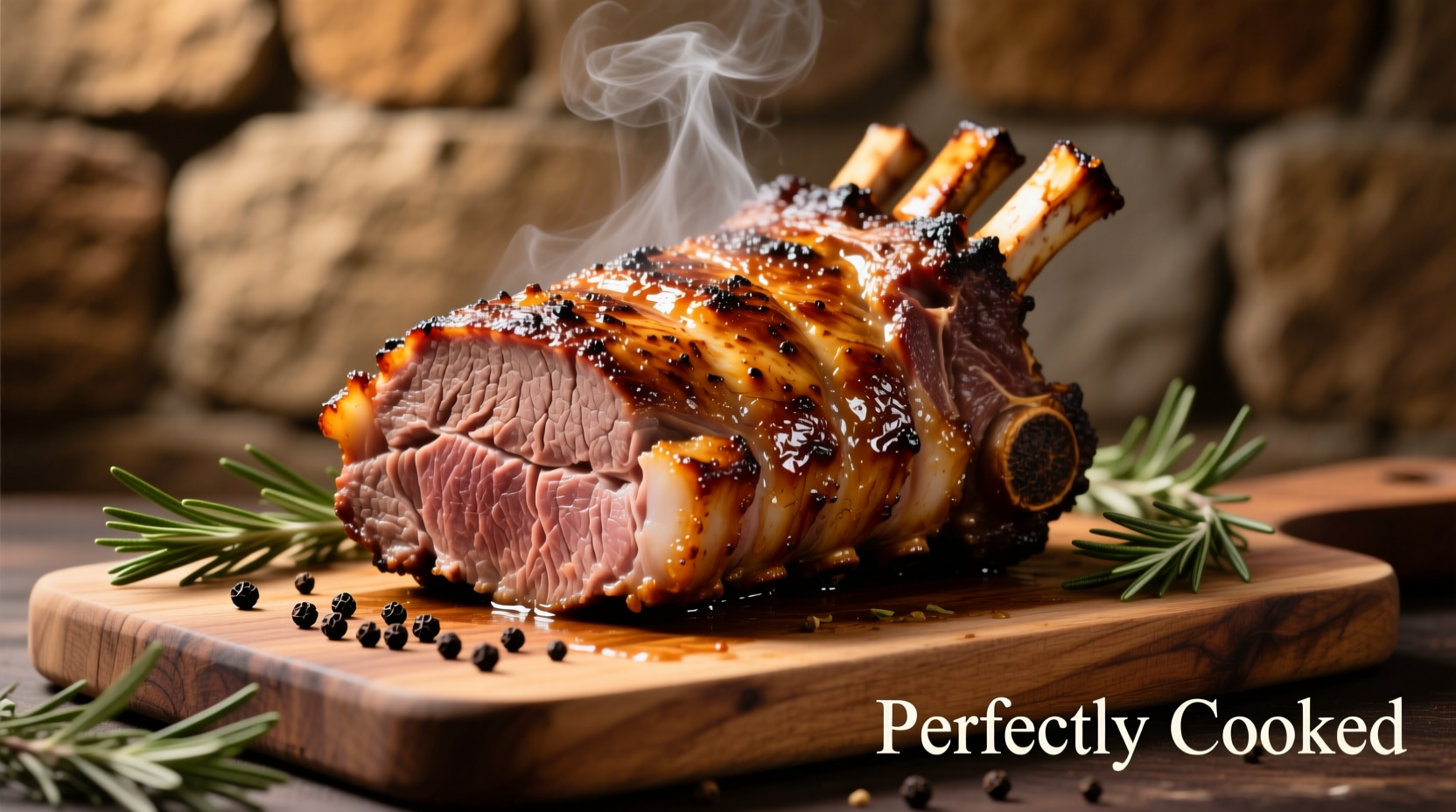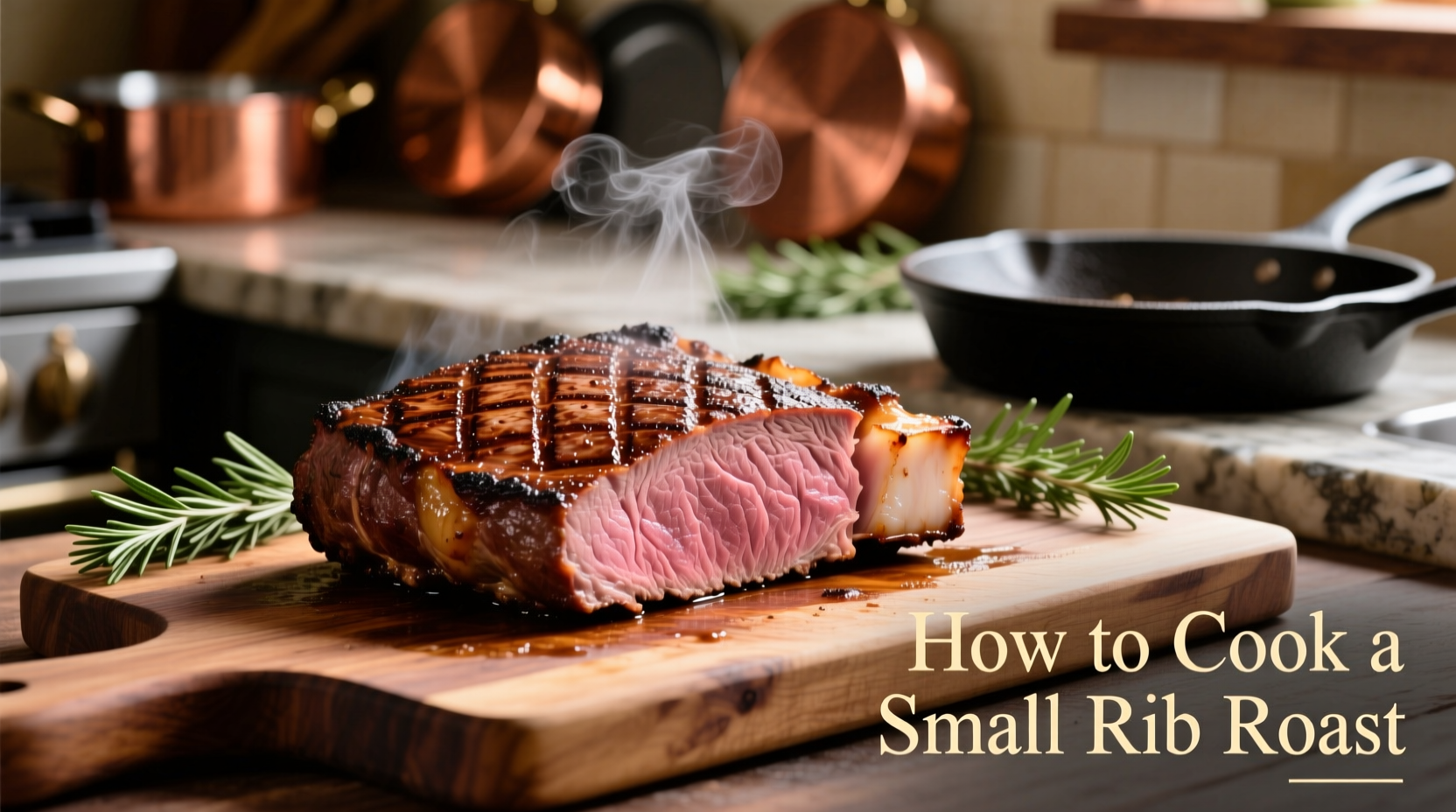The Ultimate Guide to Cooking a Small Rib Roast Perfectly
Nothing impresses guests quite like a perfectly cooked small rib roast. Yet many home cooks struggle with this classic centerpiece, ending up with dry meat or uneven doneness. The secret lies not in complicated techniques but in understanding the science of slow roasting and proper temperature control. In this guide, you'll learn exactly how to transform a small rib roast (typically 2-4 ribs) into a show-stopping meal with minimal stress.
Why Small Rib Roasts Require Special Attention
Small rib roasts (3-6 pounds) behave differently than their larger counterparts. With less mass, they cook faster and are more prone to overcooking. According to the USDA Food Safety and Inspection Service, beef roasts should reach a minimum internal temperature of 145°F with a 3-minute rest time for safety. However, culinary professionals know that removing the roast at 115-120°F allows for perfect medium-rare after resting due to carryover cooking.
Pre-Preparation: Setting Yourself Up for Success
Great results begin long before the roast hits the oven:
- Selection matters: Choose a roast with even marbling and bright red color. USDA Prime grade offers the best marbling, but Choice grade works well with proper seasoning.
- Dry brine technique: Salt the roast generously 24-48 hours before cooking. This draws out moisture initially, then allows the salt to be reabsorbed, seasoning the meat deeply and improving texture.
- Bring to room temperature: Remove from refrigerator 2-3 hours before cooking. This ensures even cooking - a critical step many home cooks skip.
| Rare | Medium Rare | Medium | Medium Well | Well Done |
|---|---|---|---|---|
| 115-120°F when removed from oven |
120-125°F when removed from oven |
130-135°F when removed from oven |
140-145°F when removed from oven |
150°F+ when removed from oven |
This temperature guide reflects actual cooking science, not just recommendations. As explained in Harold McGee's On Food and Cooking, proteins begin to firm at 120°F and progressively tighten as temperature increases, squeezing out moisture. The small rib roast's limited mass means temperature rises quickly in the final stages - hence the importance of pulling early.
Step-by-Step Cooking Process
1. Oven Setup and Seasoning
Preheat your oven to 225°F (107°C). This low-and-slow approach prevents the exterior from overcooking before the interior reaches proper temperature. Pat the roast completely dry - moisture is the enemy of browning. Apply your seasoning blend evenly over all surfaces.

2. Roasting Technique
Place roast bone-side down in a roasting pan (the bones act as a natural rack). Insert an oven-safe meat thermometer into the center of the meat, avoiding bone and fat pockets. Roast undisturbed until thermometer reads 115°F for medium-rare. For a 4-pound roast, this typically takes 1.5-2 hours, but always rely on temperature rather than time.
3. The Critical Resting Phase
Transfer roast to a cutting board, tent loosely with foil, and rest for 30-45 minutes. This allows juices to redistribute throughout the meat. During this time, the internal temperature will continue rising 5-10 degrees (carryover cooking). Professional chefs at the Culinary Institute of America emphasize that skipping this step causes up to 40% more juice loss when carving.
Pro Tips for Exceptional Results
- Reverse sear option: For an extra-crisp crust, after resting, increase oven to 500°F and return roast for 8-10 minutes until exterior reaches 150°F.
- Make au jus: While roast rests, deglaze pan with 1 cup beef broth, scraping up browned bits. Simmer 10 minutes with a sprig of rosemary.
- Carving technique: Slice against the grain in 1/2-inch thick portions. For presentation, cut between ribs first, then slice each portion.
Troubleshooting Common Issues
Dry roast: Usually caused by overcooking or insufficient resting. Remember that temperature continues rising after removal from oven.
Pale exterior: Pat meat drier before seasoning, or finish with a high-heat blast as mentioned in the reverse sear technique.
Uneven cooking: Ensure oven temperature is accurate with an independent oven thermometer. Position roast in center of oven.
Serving Suggestions That Impress
Small rib roast pairs beautifully with simple sides that won't compete with its rich flavor. Consider roasted root vegetables, Yorkshire pudding, or horseradish cream sauce. For wine pairing, a full-bodied Cabernet Sauvignon complements the beef's richness perfectly.
Frequently Asked Questions
How long should I cook a 3-rib roast?
Cook time varies by weight and oven, but a typical 4-5 pound 3-rib roast requires approximately 1.5-2 hours at 225°F to reach 115-120°F internally. Always use a meat thermometer rather than relying solely on time.
Should I cook rib roast bone-in or bone-out?
Bone-in provides better flavor and acts as a natural insulator, preventing the bottom from overcooking. However, bone-out (tied roast) offers more even cooking. For small roasts, bone-in is generally preferred for maximum flavor.
Why does my rib roast turn out tough?
Toughness usually results from undercooking (for well-done preferences) or overcooking (for medium-rare). The connective tissue in rib roast needs proper temperature management - too low and it remains tough, too high and moisture is lost. Aim for 120-125°F removed from oven for medium-rare.
Can I cook a small rib roast in a convection oven?
Yes, but reduce temperature by 25°F and monitor closely. Convection ovens cook faster and more evenly, which can be beneficial for small roasts but requires careful temperature monitoring to prevent overcooking.











 浙公网安备
33010002000092号
浙公网安备
33010002000092号 浙B2-20120091-4
浙B2-20120091-4